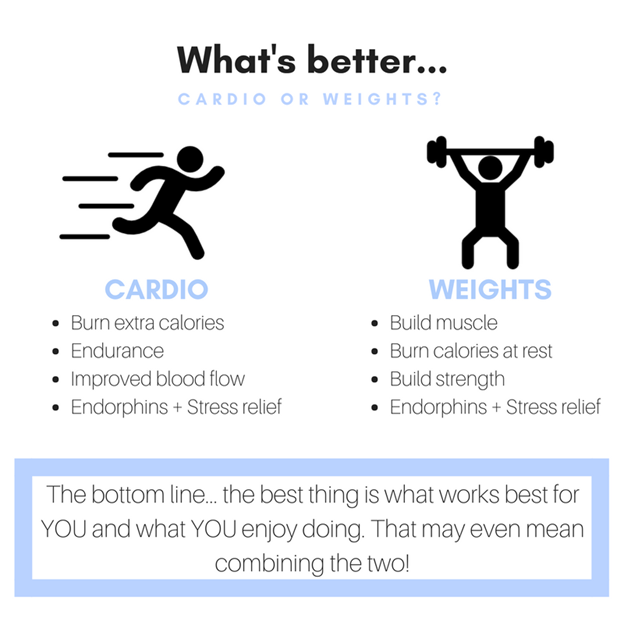Cardiovascular training and resistance training are the two primary forms of exercise that contribute to an overall healthy body. Both of these forms of exercise produce different adaptations to help facilitate a strong healthy body. With the percentage of adults in the United States who fall in the category of obese being 41.9% we must understand which form we may reap the most benefits from in regards to calories burned (Stierman et al., 2021). Depending on your preferences, one could be better than the other in regards to helping you reach your body composition goals.
Resistance Training
Resistance training is a form of exercise that is performed against a type of resistance to improve muscular strength, endurance, and size. Engaging in resistance training does not burn nearly as many calories during exercise as cardiovascular training. However, it has been shown that resistance training can improve one’s resting metabolic rate by 7% after several weeks (Westcott, 2012). In other words, resistance training might not burn as many calories during exercise as cardiovascular training but can lead to a higher metabolism overall causing you to burn more calories throughout the day when at rest.
Cardiovascular training
Cardiovascular training involves activities that get your heart rate up for extended periods such as walking, jogging, cycling, etc. Cardiovascular training burns significantly more calories during exercise than resistance training. However, in regards to increasing one’s resting metabolic rate (calories burned at rest), it is lower than that of resistance training (MacKenzie-Shalders et al., 2020).
Conclusion
Overall these two forms of exercise are a great way to improve your overall body composition. It is important to understand that this is a general idea and that the total amount of calories burned also heavily depends upon the duration and intensity of exercise for each modality. A fair comparison can only be made if duration and intensity across both forms of exercise are of equivalence. Including both types of exercise in your training is great for overall health but depending on your preferences you may want to place a larger emphasis on the one that you think can help you reach your body composition goals more effectively.
References
MacKenzie-Shalders, K., Kelly, J. T., So, D., Coffey, V. G., & Byrne, N. M. (2020). The effect of exercise interventions on resting metabolic rate: A systematic review and meta-analysis. Journal of Sports Sciences, 38(14), 1635–1649. https://doi.org/10.1080/02640414.2020.1754716
Stierman, B., et al. (2021). National Health and Nutrition Examination Survey 2017–March 2020 Prepandemic Data Files Development of Files and Prevalence Estimates for Selected Health Outcomes. (158).
Westcott, W. L. (2012). Resistance Training is Medicine: Effects of Strength Training on Health. Current Sports Medicine Reports, 11(4), 209-216. https://doi.org/10.1249/JSR.0b013e31825dabb8
